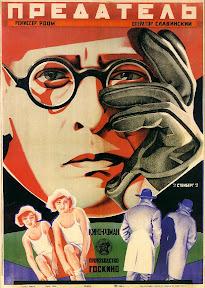The recent This American Life on various forms of cartography is one of the best I’ve heard (the one on Unconditional Love, which made me cry, is also excellent). The programs covers different ways of seeing the world through maps, which are interesting because of their hyper-specific orientation in and projection of the world. The section on sound maps – the harmonies and chords produced by the objects which surround us – resonated particularly well in light of recent experience I had on the San Francisco MUNI.
The story goes:
Due to a recent “incident” that occurred on Halloween, I have changed the path I take home from work. Instead of a straight shot from work to the bus, I walk up two blocks in order to take a different route home. This detour gives me several minutes to process the events of the evening: work, coworkers, my eating habits, my plans for the evening, and so on. Eventually, I reach the bus stop and get on.
The bus is always well lit and filled with a range of different passengers. Though the ride is seemingly entirely quiet, there is a permeating feeling of tiredness and intent; most passengers, it seems, are on their way home from work, locked into a closed space with strangers who happen to share the same obscure hours as they do. We glance ever-so-briefly, play different music into our individual headsets, look at papers left by those who came before, and always thank the driver at our stops. But getting off the bus, for me, is always the most profound.
Having spent twenty or thirty minutes on the bus – which resembles a place in limbo, where time does not physically manifest but rather emerges only as a static figure on the ticker – I get off at a stop which is quite dark. In front of me, the bus pulls away, its hum serving as a final, fading reminder of the plethora of noises that accompanied my ride. These noises, I immediately realize, comforted me in some way, assuring me of companionship; even if my companions were total strangers, we all shared the same bus, all located ourselves in the precarious space that is constantly moving without visual indication of being in motion.
I step off the bus into the street. The quietness calms me. The quietness alerts me to the emptiness of my new environment, which leads more directly into solitude. There is an image, in a movie that perhaps I’ve never seen but imagined in great detail, of the bus pulling away from a deserted street. The image is the exact moment when the bus finally moves away from sight, cutting off both visual and aural indication of its presence as it rounds a nearby corner. The environmental sound changes from a hum to a low murmur, an atmospheric sound composed by thousands of sleeping, breathing bodies in the darkened homes around me (the protagonist). And though I am calm, I realize that my wakefulness means solitude at this time of night, and I have been unwillingly thrown into this position.
Instead of idling in solitude, I begin to walk up the hill, which is quite steep, and my own breathing joins the sleeping chorus. Mine is heaving, more strained, but sparks within me a sort of tired bliss as my body tries hard to forget that my feet hurt from wearing dress shoes and standing all day. As the ground levels, my footsteps suddenly seem louder than before; I’ve become accustomed to the sound of night on these blocks and my steps serve as an uplifting beat that rises louder than the sleeping, breathing murmur.
Finally I reach my door, turn the key smoothly in the lock, and step inside. In this final transition, I realize that I have moved through various sonic environments, all of which affected my general mood:
The bus was a sleepy hum; the street was the murmur of solitude; the hill was a strained, rewarding effort; the level ground was an upbeat movement; and the turning key in the lock was a smooth, clear finale.
It’s worth noting the your sonic environment – the hums and buzzes of your home and workspaces – as a tool toward further understanding your personal practices of life and your own emotional sanity. Music theory aside (I’m ignorant here), we know what sounds beautiful to our own ears and taking the sounds around us seriously can potentially open up new ways of stimulating our ways of being in the world and serving as a strategy for changing our affectations. Though I felt solitude from the deserted street, my movement into new sonic environments changed my own feelings and allowed me to process further my understanding of myself in the world.
If nothing else, let this speak toward nomadology – a specific nomadology on the sonic plane.
Subscribe to:
Post Comments (Atom)


4 comments:
bravo! yes, "mapping" was maybe the best this american life to date. how about that devil chord? ah!
hi qt i have a secret myspace but friending you is really difficult. evidently you require a code? or something? find me ok!
also i feel like you are going to become a famous blogger and it makes me feel net-shy.
this is wonderful.
yeah man, internet famous or not, you're a great blogger. A+! (quick shipping, as described)
Post a Comment